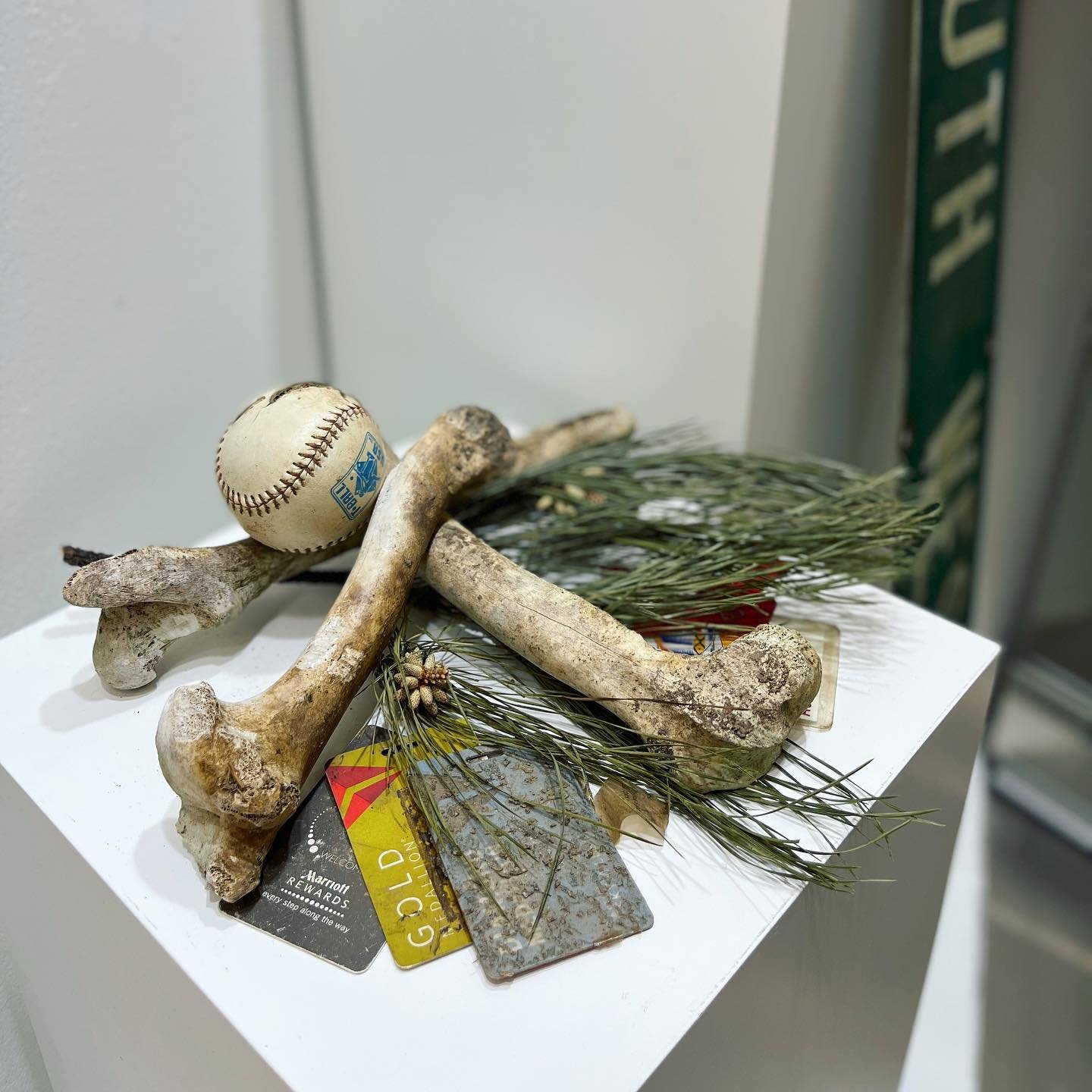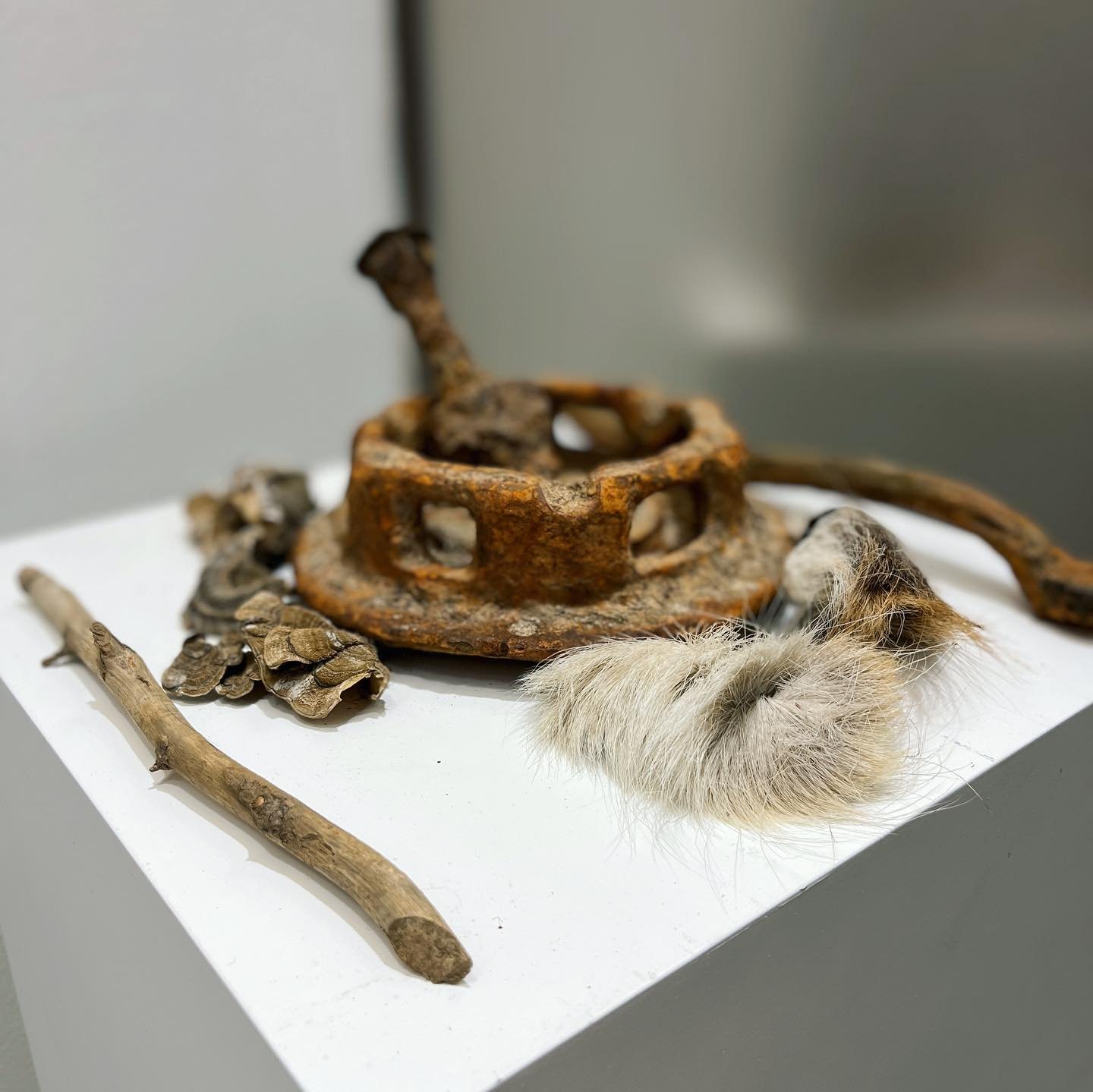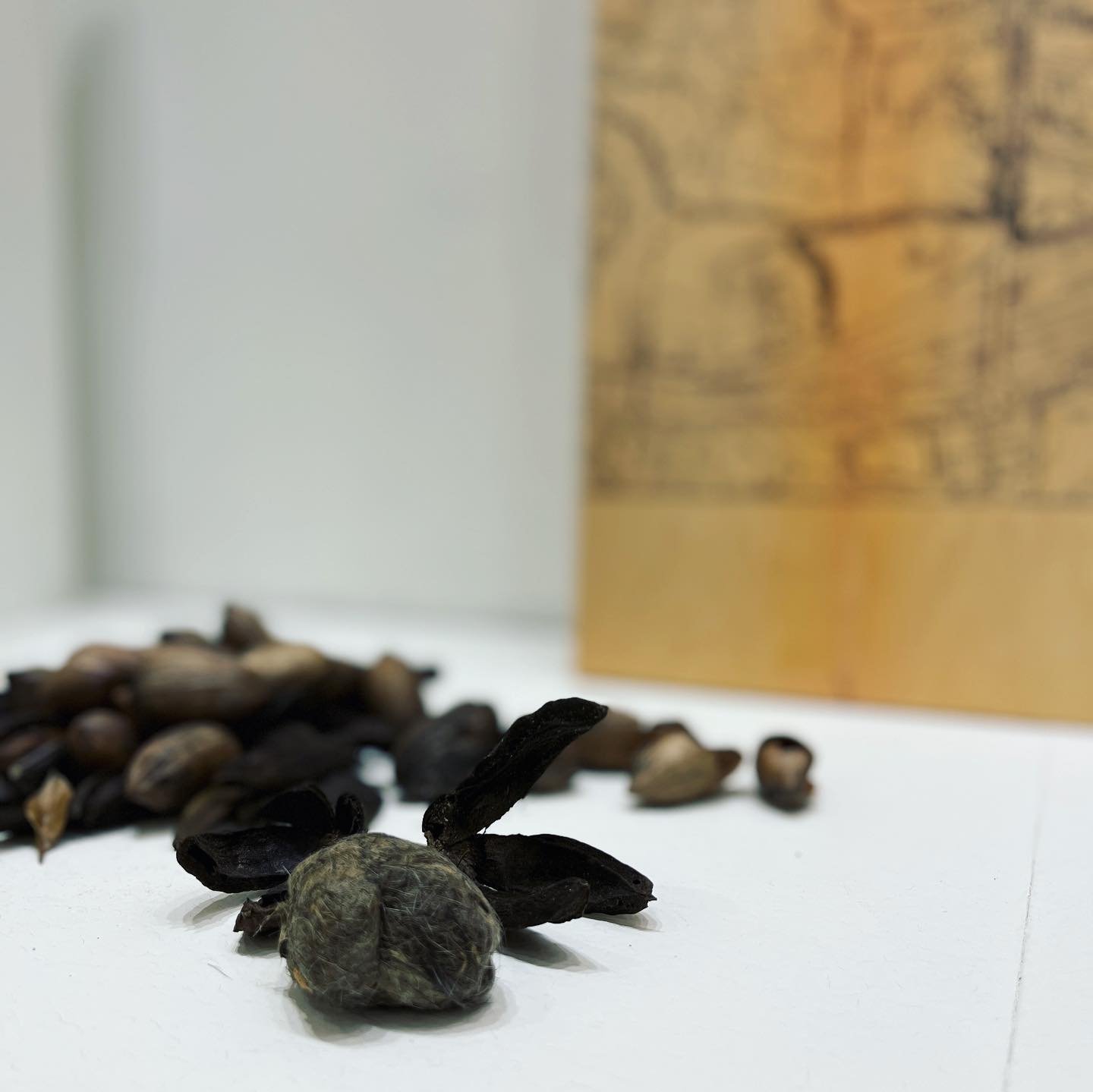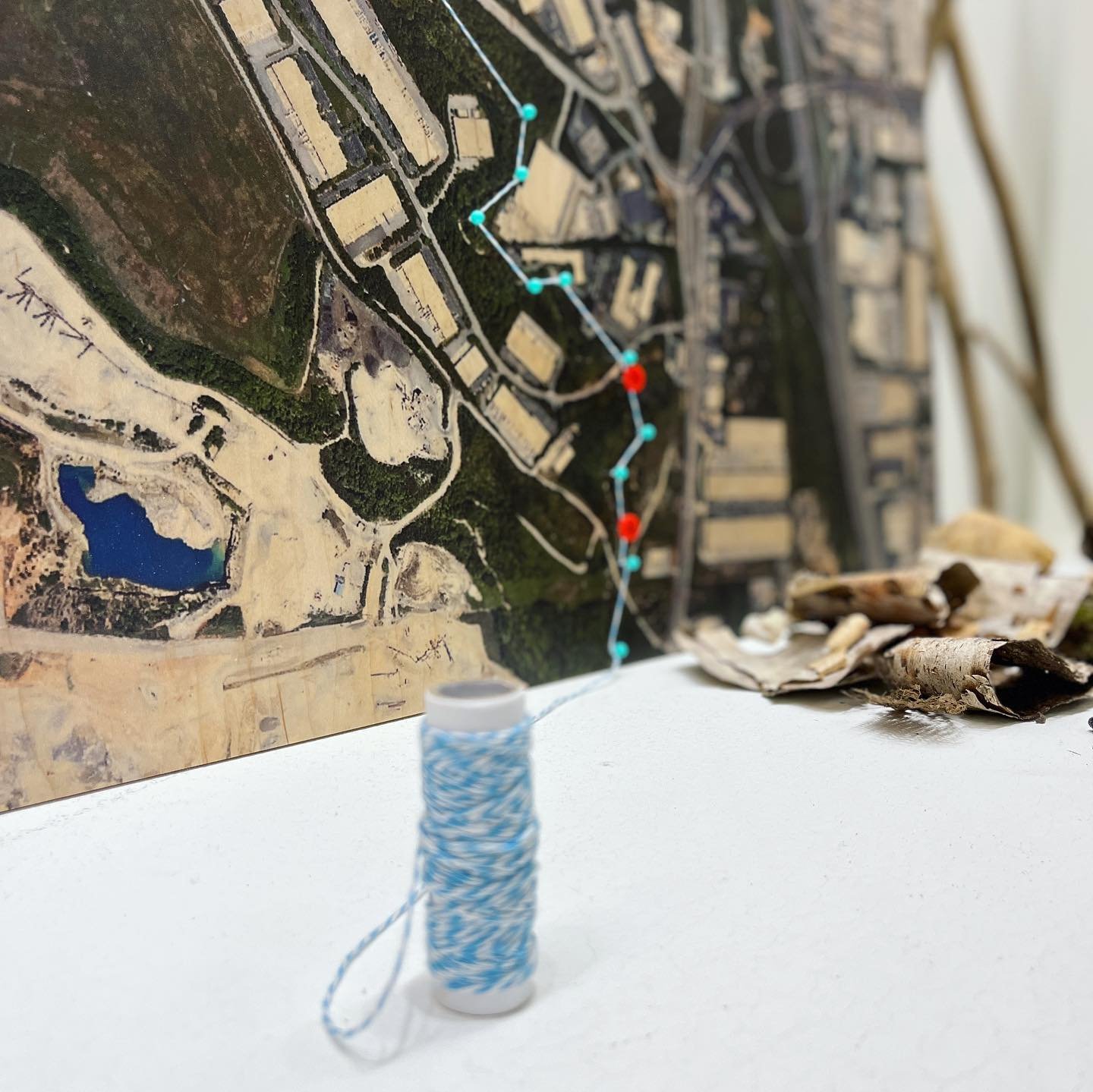Tracing the River in the Airport
City as Site, Hartsfield-Jackson Atlanta International Airport, March 2022-2023. Photo by Marian Liou.
Next time you’re out at Hartsfield-Jackson Atlanta International Airport E Concourse, check out my contribution to a group show on “City as Site,” curated by Jess Bernhart for the ATLArts program. I first learned the word psychogeography when I was working on Flight Path, as a term for how we created "mind maps" of a landscape based on our personal experiences of places.
My installation puts not just the Flint headwaters back on the map, but also the hidden cemeteries and erased neighborhoods around the airport. Thanks to some intrepid volunteers, I was able to include found objects from the river banks that hint at the river’s history and resilience. Excited to bring coyote scat and bones and beaver-chewed sticks into the terminal, and to help travelers connect to the river that’s flowing nearby.
From my Artist’s Statement:
Since 2017, I have taken hundreds of people—southside residents, engineers, students, scouts, elected officials, airport employees, and other curious explorers—on tours to “find the Flint.” We start at the urban source in East Point and proceed to the edges of Hartsfield-Jackson as if on a scavenger hunt, looking for the historic stream corridor behind fences and in storm drains. The headwaters of Georgia’s second longest river are virtually unknown and invisible, a natural marvel quarantined in a couple miles of culverts under the runways.
I find myself pointing out signs of life in the creeks, as if to prove that this is indeed a river worthy of our notice and protection. We stop to pick blackberries and study the undersides of stones for mayfly eggs. Over the years, we have spotted an alligator snapping turtle, beaver dams, snakeskins, box turtles mating, deer paths and bobcat tracks, crawfish shells, otter bones, and the ruins of a pre-Civil war era gristmill. I wanted to bring some of these artifacts into the airport that was built on top of the headwaters, to show travelers the resilience of the communities--both human and nonhuman--under and around this massive facility. These are the items I gathered while mucking around the airport edges during a couple weeks in March 2022.
This show will be on display for 18 months and because it's beyond security, you must be a ticketed passenger (or airport employee) to view it.





